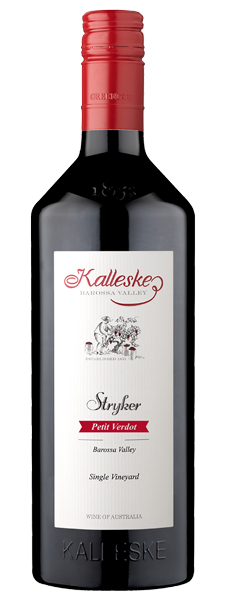Colour:
2022 Stryker is deep purple in colour.
Aroma:
It has a brilliant perfume lift with intense floral notes including violet and lavender, together with a touch of sage, dried herbs, and black cherry.
Palate:
The palate is medium bodied with rich purple fruit flavours. It is thoroughly juicy with solid tannins balancing out the bright crunchy fruit. These natural tannins add structure giving a refreshing dryness. Black licorice is evident as well as hints of dark cocoa. The finish is extremely lengthy.
Recommended Drinking:
This is a varietal and balanced Petit Verdot that can be enjoyed now or over the next decade.
The 2022 vintage was excellent. Winter was significantly wetter than average getting the vines off to a brilliant start leading into Spring which was cool with median rainfall. Summer was mild and dry apart from rain on the last day. Autumn remained mild with generally perfect mid-20s weather combined with cool nights ensuring steady even ripening across all varieties. The 2022 yields were good and the quality is great, a classic Barossa vintage displaying rich flavours with fine balance.
The single-vineyard Petit Verdot is one of the newer varieties planted on the property in 2005. The hand-pruned vines are low yielding and soil is shallow sand with clay subsoil.
The grapes were crushed and all stalks were included in the fermenters to add tannin, structure and complexity. The native wild yeast from the vineyard were left to naturally ferment with temperature peaking at 30 degrees C. Heading down boards were used in the fermenters, completely submersing the skins and stalks in the fermenting juice to ensure gentle extraction. After 10 days on skins, the must was pressed to tank for natural malolactic fermentation and brief maturation prior to bottling.

